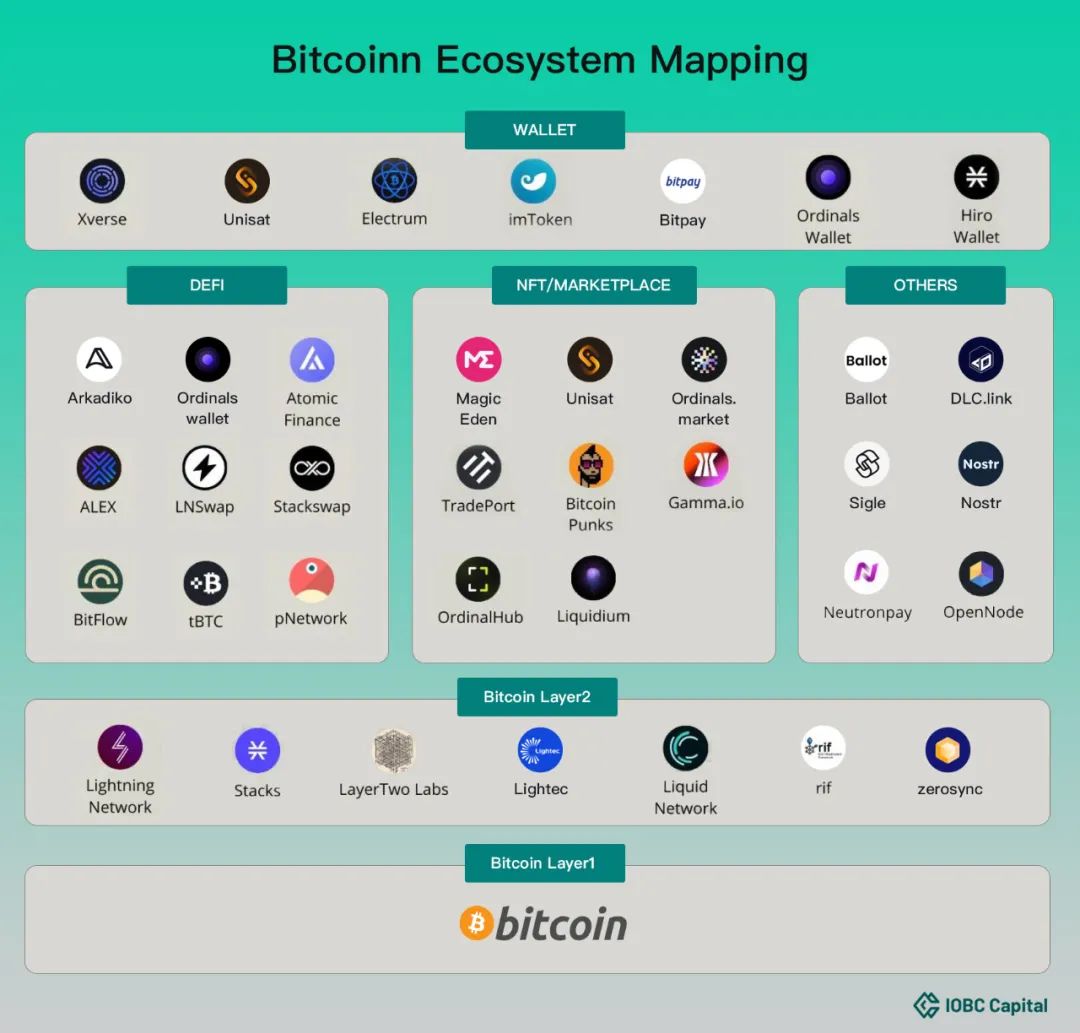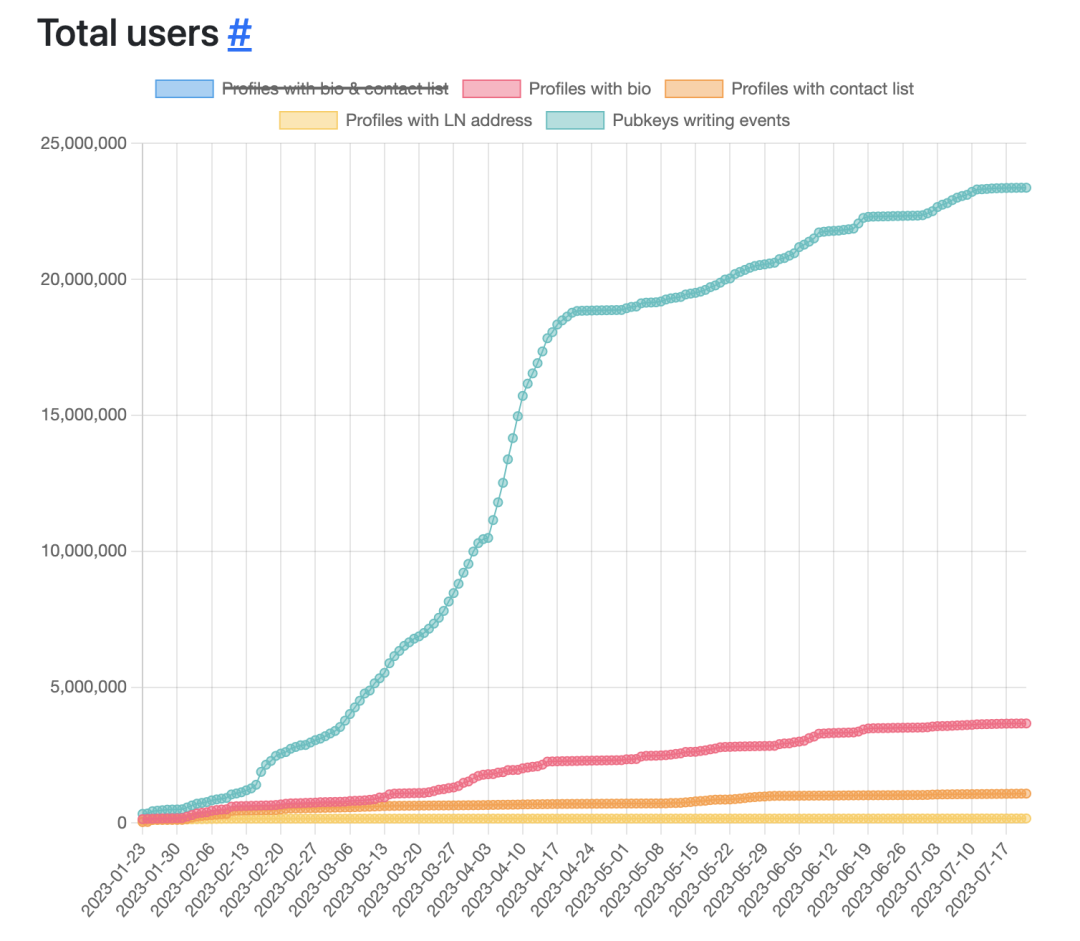Bitcoin Lightning Network + Nostr Decentralized Social Payment New Paradigm
Bitcoin Lightning Network + Nostr New Paradigm for Decentralized Social PaymentsAuthor: 0xCousin
In the first half of this year, the innovative narrative of the Bitcoin ecosystem – BRC20, Ordinals NFT, Bitcoin Layer2 – has become one of the main topics in the industry. More and more people are starting to pay attention to the development of the Bitcoin ecosystem. In the article “Innovative Narrative: A Brief Analysis of Recent Bitcoin Ecosystem Experiments”, we outlined the current development status of BRC20, Ordinals NFT, and several leading Bitcoin Layer2 projects.

In the discussion of the development path of Bitcoin, the Bitcoin community has experienced ideological struggles more than once. In the process of divergent development, a huge opportunity has gradually emerged in the Bitcoin ecosystem: decentralized social payments combining Lightning Network and Nostr.
- Is CoinDesk selling at a loss with a valuation of $125 million after being in business for ten years?
- The fourth halving of Bitcoin is imminent, will the cryptocurrency market repeat yesterday’s story?
- Why has the significant discount on GBTC gradually narrowed recently?
The Origin of Lightning Network – Scaling Debate (Layer2 Scaling VS Layer1 Big Block Scaling)
The block size of the Bitcoin network is designed to be 1MB, and one block is generated every 10 minutes. Under the condition of similar transaction volume, the Bitcoin network can process about 7 transactions per second. This cannot meet the demands of a large number of businesses, especially during the bull market when on-chain transactions are active. Therefore, as early as 2015, there were voices in the Bitcoin community calling for scaling.
There are divergent opinions on the choice of technical path for scaling in the Bitcoin community:
1. Radical miner faction: Support scaling by increasing transaction capacity through Layer1 big blocks
Some radical miner factions have chosen Layer1 big block scaling. Before the upgrade to SegWit, a hard fork resulted in the creation of Bitcoin Cash at block height 478558.
2. Conservative developer community: Advocate for upgrading with Layer1 technology + scaling with Layer2
The Bitcoin Core development team, represented by Bitcoin Core, advocates for maintaining the “non-sovereign asset” attribute of Bitcoin and only carrying out conservative technical upgrades on Layer1 (SegWit Segregated Witness), while expanding the application scenarios of Bitcoin through Layer2 off-chain scaling (Lightning Network).
In August 2017, Bitcoin underwent the SegWit upgrade. Because only transaction information is packaged into blocks and digital signature information is placed in the Extended Block, the current block size of Bitcoin is mostly around 1.5MB (theoretical “4 times” scaling is achievable, 1MB for transaction information, 3MB for digital signatures). The number of transactions that can fit into each block has increased, achieving a certain degree of Layer1 scaling. In March 2018, the Lightning Network went live, using the Offchain solution of State Channel to help the Bitcoin network achieve fast off-chain payments.
Since then, a combination scaling solution of Bitcoin Core’s advocated Layer1 technology upgrade + Layer2 off-chain scaling has been realized to a certain extent. It maintains the value proposition of “Bitcoin as digital gold, Lightning Network for instant payments”.
…
After a complete cycle, the Lightning Network now has 18,000 nodes, running over 70,000 channels, with over 5,400 BTC on the Lightning Network. In addition to the Lightning Network, there have been multiple Bitcoin Layer2 projects such as Stacks Network, Rootstock, and Liquid Network. Bitcoin Cash also forked into BSV in November 2018.
The problem with the Lightning Network is that its payment function is not suitable for a large number of independent dApps, but rather for embedding into other dApps to provide fast and small-scale payment functions. Particularly, social applications are the most suitable as carriers for embedding the Lightning Network.
Social Payments: The Combination of Nostr and the Lightning Network
Because the developer of Nostr, fiatjaf, is also a developer of the Lightning Network, Nostr natively supports the Lightning Network.
Nostr is a minimalistic social protocol that is not based on blockchain, and it is a censorship-resistant global social network. Nostr transmits notes and other stuff through relays. It does not rely on any centralized server. Clients publish information and relays transmit it, making the publication and transmission of information censorship-resistant. Any user can create public and private keys, so they are not restricted by third-party servers.
In terms of user experience, the social network Damus, based on Nostr, has similar features to Twitter. Users can create posts (like tweets), like posts, follow or unfollow others, and retweet, etc.
To use Nostr, users need to run a client, which can be a native client or a web client. When users want to publish content, they need to first edit the content, sign it with a key, and then send it to multiple relays. Relays are responsible for broadcasting the content published by users. Anyone can run a relay, and the relay only needs to accept and forward posts from users connected to it. Users do not need to trust the relay because the signing and verification are done on the client side.
The most popular client of Nostr, Damus, has built-in Bitcoin Lightning Network payment functionality. Users only need to input their Nostr public key and they can directly use the Lightning Network payment relay with a one-time fee. After payment, users will receive a Bitcoin Lightning Invoice.
The design concept of Nostr is somewhat similar to the Bitcoin Network. Developers create various clients for users to choose from, and clients are used for signing and verifying information. Relays are responsible for fetching, storing, and transmitting information from connected clients and forwarding it to other clients. There are also many relays. Users only need to create a pair of public and private keys to use Nostr without permission. It is somewhat similar to the development team, miner community, and users in the Bitcoin community. Each link is designed to be robust and censorship-resistant.

According to Nostr.Band, there are currently over 23 million pubkeys, with over 3.6 million accounts having personal profiles and over 170,000 accounts having Lightning Network addresses. There are 1,644 relays, and over 100 million events have occurred.
The crypto community’s main concern about Nostr is the lack of incentives for relays. If relays have token incentives, most tokens may be controlled by a few people, making it difficult to form effective incentives and making them susceptible to attacks. If relays do not have token incentives, there will be no continuous motivation to store user data, and there is a possibility of relays actively or passively deleting data.
A possible solution is to set up an AI bot as a relay for Nostr, responsible for fetching, storing, and transmitting information from connected clients and forwarding it to other clients. Compared to humans, AI can be more neutral and will not filter out user content based on personal preferences or mistakes. At the same time, a Lightning Network address that charges users can be set up, and new users need to pay a certain amount of BTC as a one-time fee to use the relay. The BTC collected by the AI relay can be used to cover operational costs.
The combination of Nostr and Lightning Network sets a benchmark for the native integration between social applications and Bitcoin. There may be more social applications integrating with Bitcoin (Lightning Network) in the future, and perhaps DeSo, with its high Mass Adoption rate, will be the first to explode in the integration with Bitcoin’s Lightning Network.
Summary
Bitcoin, as a decentralized payment system with no barriers to entry, combined with the Lightning Network for fast payments, has unparalleled advantages in decentralized social payments and even in AI applications.
References:
https://bitcoin.org/en/bitcoin-core/caLianGuaicity-increases
https://lists.linuxfoundation.org/pipermail/bitcoin-dev/2015-December/011865.html
https://github.com/nostr-protocol/nostr
We will continue to update Blocking; if you have any questions or suggestions, please contact us!
Was this article helpful?
93 out of 132 found this helpful
Related articles
- Exploring the Vietnamese crypto market VC interest is growing, NFT community is rising
- Exploring the Reasons behind the Low Adoption Rate of DeFi in the South Korean Cryptocurrency Market
- NYDIG What impact will the forecasted market size of Bitcoin spot ETF have?
- If the Bitcoin spot ETF is approved in the United States, how much capital will it bring to the market?
- Will Financialization Destroy NFTs? An Exploration of the Impact of NFTFi on the Market
- How does Ethereum build ‘brick by brick’ for the metaverse?
- Interpreting the Current Situation of Digital Asset Custody Opportunities and Challenges for Institutional Investors.





